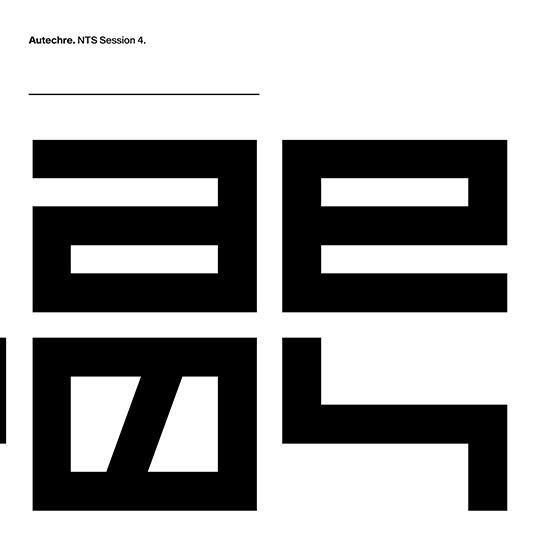
OUTLOOK FESTIVAL 2018 JAPAN LAUNCH PARTY
開催日時:2018.8.10 (FRI/Before Holiday)
会場: clubasia + VUENOS (2Venue circuit ) , Tokyo www.clubasia.jp
開催時間 : 21:00 OPEN
料金 : 前売 3,000円 / 当日 4,000円
clubasia : 東京都渋谷区円山町1-8 1F&2F
+ VUENOS : 東京都渋谷区道玄坂2-21-7 1F&B1F
TEL. 03-5458-2551
ベース・ミュージックとサウンドシステムの世界的祭典「OUTLOOK FESTIVAL」 の 「JAPAN LAUNCH PARTY」
2018年8月10日(金/祝前) 東京 渋谷 clubasia + VUENOSの周遊4フロアー!!!
ラインナップ発表!!
毎年9月にクロアチアの半島を貸し切って開催される世界最大のベース・ミュージックとサウンドシステム・カルチャーのフェスティバル『Outlook Festival』
ヨーロッパで数々のフェスティヴァル・アワードを受賞する超人気フェスで毎年5万人を超えるオーディエンスが世界各地からクロアチアの半島に集まり、ローマ時代のコロシアムや城塞の遺跡、ビーチ、船上パーティといったアドリア海に面した奇跡的なロケーションで行われる巨大イベントだ。 11周年を迎える今年も既に強烈なラインナップがアナウンスされており100都市近くのクラブ・パーティーと連携し世界中でワールドツアーとして開催されるローンチ・パーティの日本版が「OUTLOOK FESTIVAL JAPAN LAUNCH PARTY」である。中でも規模・クオリティ共に本場ヨーロッパまで噂が轟いているのが日本版ローンチ・パーティであり、日本を代表するベース・ミュージックのプレイヤーが集結しアジア最高峰のサウンドシステムでプレイする“アジア最強の都市型ベース・ミュージック・フェス"として世界中から注目を集めている。
さらに世界中で話題沸騰中の「レッドブル・カルチャークラッシュ」の日本版とも言える「OUTLOOK JAPAN SOUND CLASH」や コンテスト「ROAD TO OUTLOOK JAPAN」のファイナルラウンドも見どころであり各フロアに設置される日本屈指/最強のサウンドシステム、レーベル毎のショウケース等、普段のクラブ・イベントでは見れない企画で満載だ。2013~14年 AgeHa/Studio Coast、2015年 Sound Museum Vision、2016年には代官山 UNITビルを丸ごと使用した3フロアー、2017年より clubasia + VUENOS の2 Building 周遊 4 Floor ナイトタイムでの開催!!!
サウンド システム カルチャーを牽引する世界屈指のSOUND SYSTEM『eastaudio SOUNDSYSTEM』 SOUNDSYSTEM AWARDS"Highest Sound Quality"2013年度受賞。
サウンドスラッガーやOUTLOOK JAPAN LAUNCHでその実力は実証済みの『MAXTONE HI-FI 』 BACK TO CHILLに照準を合わせたサウンドシステムとして洗練された重低音を再生するシステムとして鍛え上げられてきた『BROAD AXE SOUND SYSTEM』の 3 SOUND SYSTEM!!
そして JP出場権をかけたコンテスト「ROAD TO OUTLOOK JAPAN 2018」接戦となったセミファイナルを制した『savo』『kaito komori』『Nishiura』の3組がこの日、当日「FINAL ROUND」現場で決戦!!
そして『OUTLOOK JAPAN SOUND CLASH』 今年の出場者は『#_O_M_G_』TOKYO等でも活躍する 関西HipHop界の最重要人物 DJ GEORGEと盟友MC MOGGYYによる『NEW KID'N PLAY』!! 北海道 函館シティーMUTANT RAGGA『MDS CREW』のドン SHORT-ARROWと九州福岡を代表するREGGAE DEEJAY NINETY-Uのコンビ『SHORT-ARROW & NINETY-U』!! TOKYO GRIMEシーンの中心、UKDとSintaからなる『Double Clapperz』が満を持して参戦!! 今年はどんなダブが乱れ飛ぶのか!? どんなゲストアクトがステージに登場するのか!? ジャンル枠を越えた猛者が集う異種格闘技戦!意地とプライドを賭けた音の戦い!
全てが見逃せない夜がまたやってくる!!
:: FULL LINE UP ::
JONNY DUB (LEVELZ) from UK
PART2STYLE SOUND
KURANAKA1945
TREKKIE TRAX CREW
PK Brako from UK
CRZKNY
RED-I from MANILA
D.J.Fulltono
食品まつり a.k.a FOODMAN
ShioriyBradshaw
DJ WILDPARTY
※ 以下 A to Z
Amps
CHANGSIE
FELINE
HELKTRAM & CITY1 from Back to Chill
iSOP
Ja-ge George
K8
KEN & SATOSHI from HANGOVER
Madkosmos
maidable
MIDNIGHT ROCK
NATURAL VYBZ
ONJUICY
SAKO
STGM
SYNDROME & MC STONE
Tribal Connection
VIBES MAFIA
Vibes Only Crew
And more!!!
[ OUTLOOK JAPAN SOUND CLASH ]
NEW KID'N PLAY (DJ GEORGE & MC MOGGYY)
vs
Double Clapperz
vs
SHORT-ARROW & NINETY-U
and Guest Acts
[ ROAD TO OUTLOOK JAPAN 2018 FINAL ROUND ]
savo from SHURISQUAD
vs
kaito komori
vs
Nishiura
:: SOUND SYSTEM ::
eastaudio SOUNDSYSTEM
MAXTONE Hi-Fi
BROAD AXE SOUND SYSTEM
:: FOOD ::
新宿ドゥースラー
>>> https://outlookfestival.jp/lineup
△▼△▼△▼△▼△▼△▼△▼△▼△▼△▼△▼△▼△▼△▼△▼△▼△▼△▼△▼△▼

[ OUTLOOK JAPAN SOUND CLASH ]
NEW KID'N PLAY (DJ GEORGE & MC MOGGYY)
vs
Double Clapperz
vs
SHORT-ARROW & NINETY-U
and Guest Acts
>>> https://outlookfestival.jp/soundclash
「Red Bull Culture Clash」の日本版ともいえる『OUTLOOK.JP SOUND CLASH』 日本を代表するベース・ミュージックの代表格3組が激突するあの熱い戦いが今年も繰り広げられる!一点モノのオリジナル・キルチューン(ダブ・プレート)をプレイしあう音楽の戦争、サウンドクラッシュ!
今年の出場者は『#_O_M_G_』TOKYO等でも活躍する 関西HipHop界の最重要人物 DJ GEORGEと盟友MC MOGGYYによる『NEW KID'N PLAY』!! 北海道 函館シティーMUTANT RAGGA『MDS CREW』のドン SHORT-ARROWと九州福岡を代表するREGGAE DEEJAY NINETY-Uのコンビ!! TOKYO GRIMEシーンの中心、UKDとSintaからなるグライムプロデューサー・デュオ『Double Clapperz』が満を持して参戦!! 今年はどんなダブが乱れ飛ぶのか!?どんなゲストアクトがステージに登場するのか!?ジャンル枠を越えた猛者が集う異種格闘技戦 全てが見逃せない夜がまたやってくる!!
△▼△▼△▼△▼△▼△▼△▼△▼△▼△▼△▼△▼△▼△▼△▼△▼△▼△▼△▼△▼

毎年恒例 OUTLOOK_JPの出演権を賭けたDJコンテスト
[ ROAD TO OUTLOOK JP 2018 FINAL ROUND ]
savo fr.SHURISQUAD vs kaito komori vs Nishiura
毎年ジャンルの壁を越えた猛者が集う異種格闘技コンテスト『ROAD TO OUTLOOK JP』 昨年のファイナリストは、首都圏/関西の実力者、ニューカマーらを抑え、 札幌、福岡 地方都市の Bass Music系パーティーでプレーする豊富な現場経験を持つDJらが勝ち上がり、 初の本祭現場での決戦をダブ・プレートを駆使した NoB が勝利! 過去のチャンピオンには、大阪のPaperkraft、Drum and Bass Producer/DJのDJ MASA、福岡在住iSOP、Back to Chill等で活動するYuittyらが名を連ねる。 本年度もセミファイナルを勝ち抜いた3組による 8/10 OUTLOOK JP 当日現場でファイナルジャッジ!!!
最終投票結果(いいね!の数)
1位 savo fr.SHURISQUAD - 405票
2位 kaito komori - 370票
3位 Nishiura - 340票
すべての応募者、投票していただいた皆様にRespect!!
上記3組が8月10日(金/祝前)OUTLOOK JP 当日現場で開催されるファイナルに進出します!
次はファイナルの会場で皆さんのジャッジをお待ちしております!!
>>> https://outlookfestival.jp/contest
△▼△▼△▼△▼△▼△▼△▼△▼△▼△▼△▼△▼△▼△▼△▼△▼△▼△▼△▼△▼

e+(イープラス)、clubberia、iFLYER及び販売協力店にて一般前売(3,000yen)発売中!
>>> https://outlookfestival.jp/ticket
e+(イープラス) : https://eplus.jp
clubberia : https://clubberia.com/ja/events/278268-OUTLOOK-FESTIVAL-JAPAN-LAUNCH-PARTY/
iFLYER : https://iflyer.tv/ja/event/301989
新宿ドゥースラー : 03-3356-5674 https://duusraa.com
Dub Store Record Mart : 03-3364-5251 https://www.reggaerecord.com
DISC SHOP ZERO : 090-7412-5357 https://www.discshopzero.com
虎子食堂 : 03-6416-1197 https://toranoko-shokudo.com
Hi Fashion Records : https://reggae-store.com
disk union 渋谷 CLUB MUSIC SHOP : 03-3476-2627 https://diskunion.net/shop/ct/shibuya_club
disk union 下北沢 CLUB MUSIC SHOP : 03-5738-2971 https://diskunion.net/shop/ct/shimokitazawa_club
disk union 吉祥寺店 : 0422-20-8062 https://diskunion.net/shop/ct/shinjuku_club
disk union 新宿 CLUB MUSIC SHOP : 03-5919-2422 https://diskunion.net/shop/ct/shinjuku_club
※20歳未満の方のご入場はお断りさせて頂いております。写真付き身分証をご持参ください。
※YOU MUST BE 20 AND OVER WITH PHOTO ID.
※ご来場の際にエントランスにて別途ドリンク代(¥600)をいただきます。
※TICKET FEE IS EXCEPT 1 DRINK (600YEN) CHARGE.
※2会場の移動にはご入場時にお渡しするリストバンドが必要となります。再発行はできません。紛失や取り外しの場合は無効となりますのでご注意ください。
※TO COME AND GO 2 VENUES, YOU NEED WRISTBAND. NO REISSUANCE. THANK YOU.
△▼△▼△▼△▼△▼△▼△▼△▼△▼△▼△▼△▼△▼△▼△▼△▼△▼△▼△▼△▼

Outlook Festival 2017 JAPAN LAUNCH PARTY PHOTO HIGHLIGHT 公開!
>>> https://outlookfestival.jp/photogallery
△▼△▼△▼△▼△▼△▼△▼△▼△▼△▼△▼△▼△▼△▼△▼△▼△▼△▼△▼△▼

Outlook Festival 2017 Highlights
>> https://youtu.be/PWSYi6vQRxg
△▼△▼△▼△▼△▼△▼△▼△▼△▼△▼△▼△▼△▼△▼△▼△▼△▼△▼△▼△▼

[ WHAT IS OUTLOOK? ]
OUTLOOK FESTIVALとは? 毎年9月にクロアチアで開催される世界最大の“ベース・ミュージックとサウンドシステム・カルチャー”のフェスティバルである。UKではフェスティバル・アワードなどを受賞する人気フェスで、オーディエンスが世界各地から集まり、400組以上のアクトが登場。このフェスのローンチ・パーティは、世界各国100都市近くのクラブ/パーティと連携して開催され、その中でも本場UKまで噂が轟いているのが、日本でのOUTLOOK FESTIVAL JAPAN LAUNCH PARTYである。
OUTLOOK FESTIVAL JAPAN LAUNCH PARTYは 日本を代表するベース・ミュージックのプレイヤーが集結し、アジア最高峰のサウンドシステムでプレイする、いわばアジア最強のベース・ミュージックの祭典である。さらに世界中で話題沸騰中の「Red Bull Culture Clash」の日本版ともいえる「OUTLOOK.JP SOUNDCLASH」も見どころのひとつであり、他のクラブ・イベントでは見れない企画が満載。

05–09 September 2018
Fort Punta Christo, Pula, Croatia
https://www.outlookfestival.com/
Every year in September, Outlook brings together 12,000 music lovers from around the world to enjoy the best sound system culture has to offer in one of the most surreal locations ever imagined for a festival.
Set in an abandoned 19th-century fort nestled over the Adriatic sea, with daytime beach sessions and countless boat parties, Outlook is a perfect combination of a quality music festival and a holiday, soaking up the Croatian sunshine.
Revealed in January, the line-up consistently brings together the finest purveyors of drum & bass, hip-hop, garage, grime, dubstep, dub, reggae, house, techno and electronica to play on some of the best sound systems in the world.
See you at the fort...
OUTLOOK FESTIVAL's launch parties are held as a world tour cooperated with more than 90 clubs in 5 continents. Among them, our launch party in Japan a.k.a OUTLOOK_JP is even getting known in UK because of its scale and quality.
△▼△▼△▼△▼△▼△▼△▼△▼△▼△▼△▼△▼△▼△▼△▼△▼△▼△▼△▼△▼
[ youtube.. ]
Outlook Festival 2016 JAPAN LAUNCH PARTY HIGHLIGHTS
https://www.facebook.com/outlookfestival.japanlaunch/videos/1350137001729809/
OUTLOOK Festival 2014 JAPAN LAUNCH PARTY
HIGHLIGHTS "SOUND CLASH/JUNGLE CLASH"
https://www.youtube.com/watch?v=-pzxynPr6KY
OUTLOOK Japan 2014 Aftermovie [BLOCKFM EDITION]
https://www.youtube.com/watch?v=Lj0dQvBCq4M
Outlook Festival 2013 JAPAN LAUNCH PARTY HIGHLIGHTS
https://www.youtube.com/watch?v=KZM6502gJSs
Outlook Festival 2017 Highlights
https://www.youtube.com/watch?v=PWSYi6vQRxg
Outlook Festival 2016 Highlights
https://www.dailymotion.com/video/x51ftvy_outlook-festival-2016-highlights_music
Outlook Festival 2015 Highlights
https://www.youtube.com/watch?v=9uIL-AHVgsU
Outlook Festival 2014 Highlights
https://www.youtube.com/watch?v=N4D0hV4Twy4
Outlook Festival 2013 Highlights
https://www.youtube.com/watch?v=krbw10OXVN8
△▼△▼△▼△▼△▼△▼△▼△▼△▼△▼△▼△▼△▼△▼△▼△▼△▼△▼△▼△▼
★OUTLOOK FESTIVAL 2018 JAPAN LAUNCH PARTY WEBサイト → https://outlookfestival.jp
★OFFICIAL FACEBOOK PAGE → https://www.facebook.com/outlookfestival.japanlaunch
★OFFICIAL TWITTER → https://twitter.com/outlookfes_jp
★OUTLOOK FESTIVAL WEBサイト → https://www.outlookfestival.com
★ZETTAI-MU WEBサイト → https://www.zettai-mu.net / https://twitter.com/zettai_mu / https://www.facebook.com/zettaimu.jp
★PART2STYLE WEBサイト → https://www.facebook.com/PART2STYLE / https://twitter.com/Part2styleSound
★clubasia WEBサイト → https://www.clubasia.jp
★VUENOS WEBサイト → https://vuenos.com
△▼△▼△▼△▼△▼△▼△▼△▼△▼△▼△▼△▼△▼△▼△▼△▼△▼△▼△▼△▼














 photo by Tatsuya Hirota
photo by Tatsuya Hirota


















